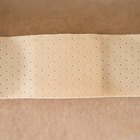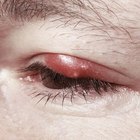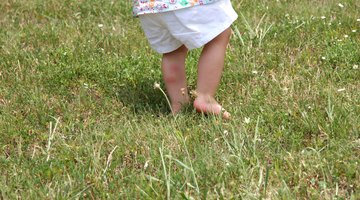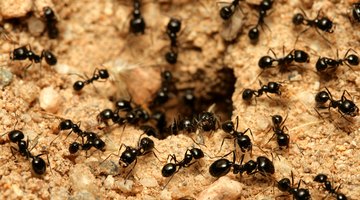Rash on Toddler's Bottom
From bright red and scaly to mild pink and itchy, the specific appearance of the rash sprinkled across your toddler’s bottom is a key to its cause. Some of these rashes require a doctor’s attention, but you should be able to get rid of most of them with proper home care. Prevent future rashes on your baby’s bottom by changing her diaper or soiled underwear promptly and avoiding skin exposure to potentially irritating chemicals.
Causes
Potential causes of a rash on a toddler’s bottom include a fungal infection, topical irritation and exposure to harsh chemicals. A yeast or fungal infection could develop on your baby’s bottom as a result of prolonged exposure to warm moisture, such as that produced inside infrequently changed diapers. A rash caused by topical irritation often develops in potty-trained toddlers who have regular wetting accidents; rubbing from the coarse fibers of wet underwear irritates and chafes the sensitive skin, which could result in reddened spots, especially if your toddler doesn’t come to you right away when he wets his pants. Some toddlers with sensitive skin suffer from a rash when their bottoms come in contact for an extended period of time with diapers and underwear that contain harsh chemicals, such as alcohol, perfumes or laundry detergent debris.
Symptoms

How to Heal a Toddler's Scraped Nose
Learn More
A rash on your toddler’s bottom typically varies in size and appearance, depending on cause and severity. A rash arising from a yeast or fungal infection often has a bright red appearance and is extremely tender and painful; this form of rash could have a shiny appearance and frequently develops following antibiotic use or after a toddler has already had a sore bottom. Often called chafing dermatitis, a bottom rash from rubbing is usually mild and doesn’t typically cause excessive irritation. Rash on the bottom resulting from chemical irritation is often splotchy in appearance and frequently itches.
Home Treatment
More mild forms of bottom rash, such as chemical irritation rash and chafing rash, typically respond well to home care treatment. Remove diapers or clothing covering your toddler’s bottom and rinse the irritated skin with clean, warm water to get rid of any lingering irritants. If necessary, wipe the bottom with fragrance- and alcohol-free wipes, then expose the rash-covered skin to the air as much as possible to speed healing and minimize potential secondary skin infections. Check with your doctor about applying a skin ointment that contains petroleum jelly or zinc oxide to soothe the irritated skin and prevent moisture from worsening the condition.
Considerations

Home Remedy for Styes on Toddlers
Learn More
Contact your pediatrician if a bottom rash continues for more than five days or if you suspect a fungal infection might be causing your toddler’s sore behind. Left untreated, these fungal infections are extremely painful and can spread and worsen. Treatment varies depending on the severity of the infection but typically includes daily topical application of an anti-fungal cream. Other signs that a visit to your child’s doctor is in order include an extremely painful or blistering rash or one that leaks yellow or white pus.
Related Articles
- “Your Toddler”; Dr. Cara Familian Natterson; 2006
- “What to Expect the Toddler Years”; Heidi Murkoff, et al.; 2008
- “Caring for Your Baby and Young Child”; Dr. Steven Shelov; 2009
- MedlinePlus: Diaper Rash
- “Toddler 411”; Dr. Ari Brown; 2010










